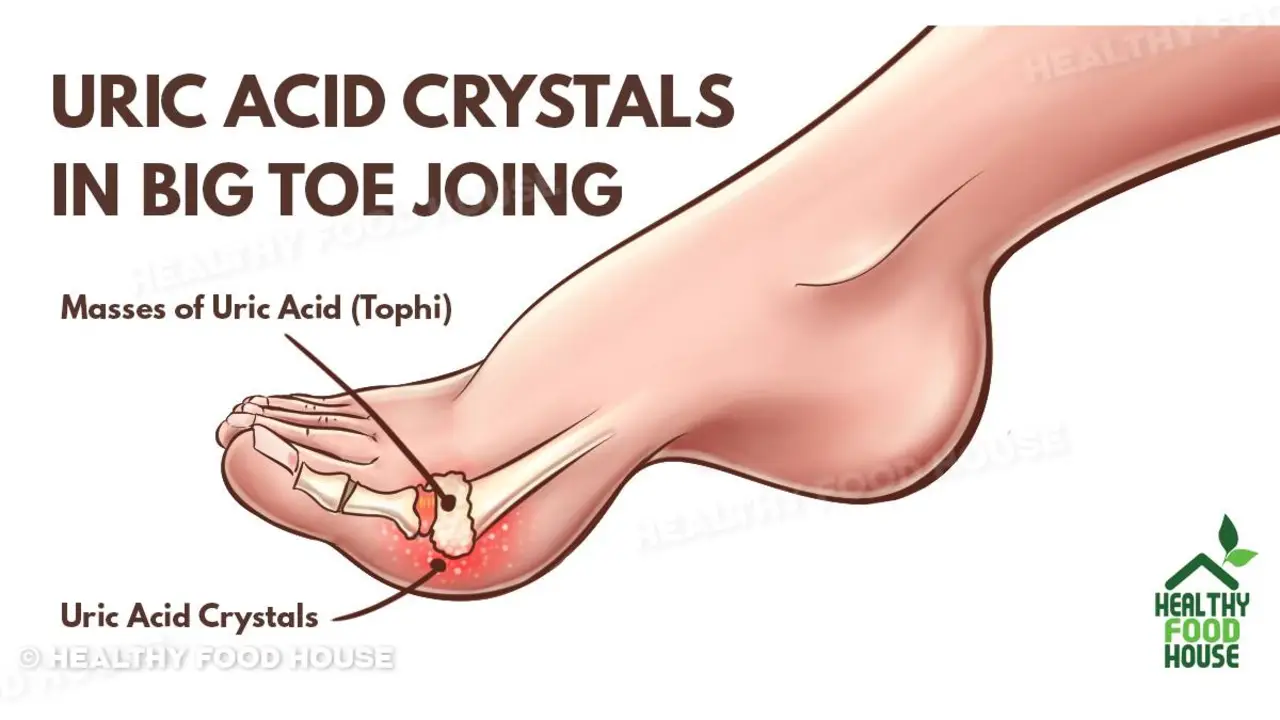Seeing a lab report with “uric acid” highlighted can be confusing. High uric acid is linked to gout and kidney stones, but a number by itself doesn’t tell the whole story. Below I explain what common results mean, why levels change, and practical steps you can take today to lower uric acid safely.
Normal blood uric acid typically sits around 3–7 mg/dL for men and 2–6 mg/dL for women. Labs vary, so check your lab’s reference range. Levels above that range are called hyperuricemia. Many people have high uric acid with no symptoms—this is called asymptomatic hyperuricemia. Symptoms to watch for: sudden joint pain and swelling (often the big toe), repeated kidney stones, or frequent joint inflammation. Causes include high-purine diet, alcohol (especially beer), sugary drinks with fructose, certain meds (like thiazide diuretics), reduced kidney function, rapid weight gain or loss, and genetic factors.
Change your plate first. Cut back on organ meats, red meat, anchovies, sardines, mussels, and other high-purine seafood. Swap sugary sodas and fruit juices for water. Even fruit juice high in fructose can raise uric acid. Choose low-fat dairy (milk, yogurt) — studies show dairy can help lower levels. Eat more vegetables, whole grains, and cherries or cherry juice occasionally; cherries have shown modest benefit for gout flare prevention.
Drink water. Aim for steady hydration to help kidneys flush uric acid; 8–12 cups a day is a reasonable starting point unless your doctor gives other advice. Lose weight slowly if you’re overweight—rapid weight loss can temporarily raise uric acid. Move more: regular moderate exercise helps insulin sensitivity and long-term uric acid control.
Limit alcohol. Beer and spirits raise uric acid and the risk of gout attacks more than wine. If you drink, keep it minimal and track how your body reacts.
Check your medicines. Some blood pressure drugs and low-dose aspirin can raise uric acid. Don’t stop meds without talking to your provider—there are often alternatives or workarounds.
If lifestyle changes aren’t enough, medication can help. The common long-term options are xanthine oxidase inhibitors like allopurinol or febuxostat, which reduce uric acid production, and uricosurics like probenecid that help the kidneys remove uric acid. Your doctor will pick a drug based on your health, kidney function, and history of gout attacks. Regular follow-up labs are needed when on these drugs.
When to see a doctor right away: severe joint pain with swelling, symptoms of a kidney stone (sharp back or side pain, blood in urine), or sudden high fever with a hot, swollen joint. For ongoing high uric acid, a primary care doctor or rheumatologist can set targets and a treatment plan.
Quick checklist: check your lab’s range, cut high-purine foods and sugary drinks, hydrate, limit alcohol, lose weight slowly, review meds with your doctor, and get medical treatment if you have gout attacks or stones. Small, steady changes usually make the difference.

Hi there, gentlemen! In today's blog post, we're going to tackle some of the most common myths and misconceptions surrounding high uric acid levels and gout. I bet you've heard many of them before, but rest assured, our aim is to debunk these myths and arm you with the facts. Let's navigate this journey together, separating fact from fiction when it comes to your health.
Fenofibrate, usually known for managing cholesterol levels, has a surprising impact on overall cardiovascular health. By targeting triglycerides, it not only improves heart performance but also reduces risks associated with heart attacks and strokes. This article delves into how fenofibrate works, its benefits, potential side effects, and tips for safe consumption. Whether you're new to fenofibrate or looking to optimize its use, here's comprehensive guidance for enhancing heart health.
As a blogger, I recently came across an interesting topic regarding the use of Cephalexin for preoperative prophylaxis. It's amazing to learn that this antibiotic can significantly reduce the risk of infection during surgery. By taking Cephalexin before a procedure, patients can prevent potential complications and ensure a smoother recovery. This is definitely an important measure to consider for those undergoing surgery. I'm glad to have discovered this valuable information and will continue to share such useful findings with my readers.
Are online pharmacies really less expensive and more convenient than your neighborhood drugstore? This in-depth article explores the real cost and time differences between RxConnected and local pharmacies, providing practical insights, data, and expert tips to help you make smarter choices about where to fill your prescriptions in 2025.
I recently discovered the incredible benefits of Scurvy Grass, a dietary supplement that's truly a game changer. Packed with essential nutrients like vitamin C, iron, and calcium, it's a powerhouse for immune support and overall health. Not only does it help prevent scurvy, but it also aids in digestion, supports bone health, and has anti-inflammatory properties. I've been incorporating it into my daily routine, and I'm already noticing a difference in my well-being. If you're looking for an all-natural supplement to boost your health, I highly recommend giving Scurvy Grass a try!
Explore six trusted online pharmacies as alternatives to CanadaCloudPharmacy in 2024. These Canadian pharmacies offer a wide selection of prescription and over-the-counter medications, each with unique strengths such as competitive pricing, secure ordering, and vast medication ranges. Discover the pros and cons of each platform to find the best option for your healthcare needs.